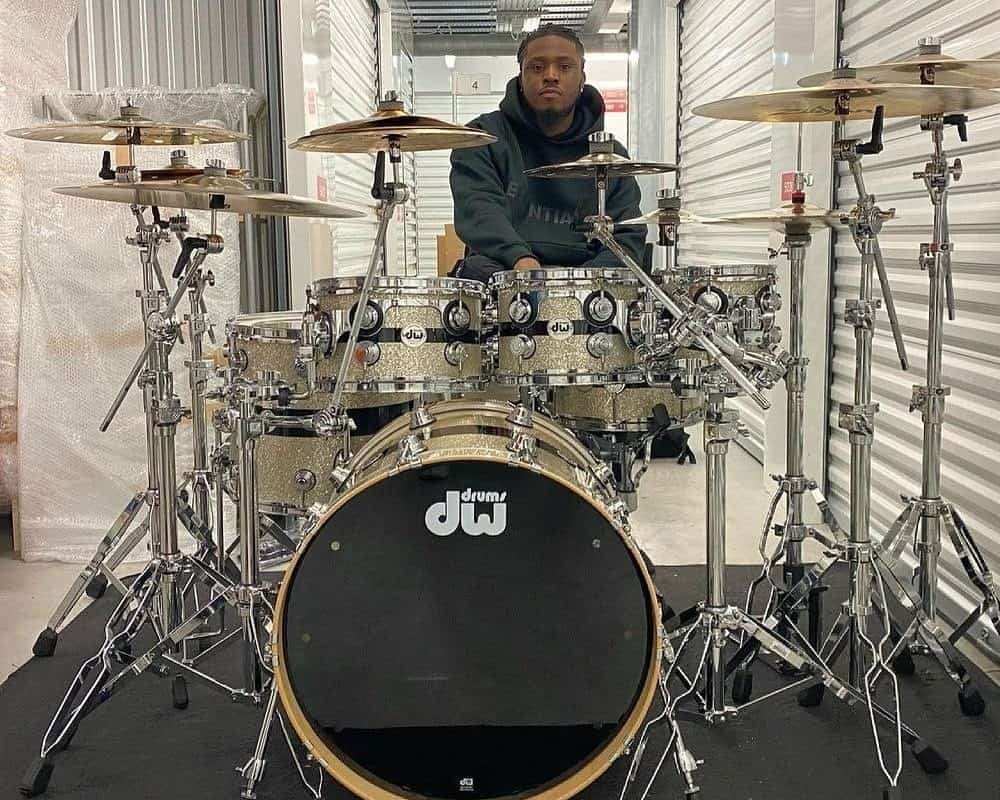How to Play Snare Drums? – TECHNIQUES AND TRICKS

To play the snare drum, sit down with the drum in front of you between your legs. Place your dominant hand on the drumhead and your other hand on the rim of the drum. Use a drumstick to strike the drumhead in the center.
A snare drum is a type of drum with multiple strings (or “snares”) stretched across the bottom head. The snare drum is one of the most important drums in a marching band or orchestra, as it provides the distinctive “snap” sound that helps keep the rhythm. The snare drum can be played with a variety of techniques, including a standard grip, a side-sticking grip, and a matched grip.

The snare drum is a versatile instrument that can be used in a wide range of musical genres. It is commonly used in rock, pop, jazz, and blues bands, as well as in marching bands and orchestras. The snare drum is also a popular choice for solo and chamber music performances.
Types of Snare Drums
Contents
There are many different types of snare drums available on the market today, each with its own unique sound and capabilities. Here is a rundown of some of the most popular options:
- Piccolo Snare Drum: The piccolo snare drum is a smaller version of the standard snare drum, making it ideal for use in marching bands and other situations where a smaller instrument is needed. The piccolo snare usually has a shallower depth than a standard snare and produces a high-pitched, sharp sound.
- Field Snare Drum: The field snare drum is a larger version of the piccolo snare, and is designed for use in outdoor marching bands. These drums have a deeper depth than piccolos and produce a louder, more resonant sound.
- Concert Snare Drum: The concert snare drum is the largest type of snare drum, and is typically used in symphony orchestras. These drums have the deepest depth of all snare drums and produce a very powerful sound.
- Tenor Snare Drum: The tenor snare drum is a smaller version of the concert snare, and is used in marching bands and drum corps. These drums have a shallower depth than concert snares and produce a high-pitched, sharp sound.
- Bass Snare Drum: The bass snare drum is the largest type of snare drum, and is used in symphony orchestras. These drums have the deepest depth of all snare drums and produce a very powerful sound.

Snare Drum Tuning
First of all, remember that a snare drum can be tuned with the snare removed or with the spring lowered. There are a lot of ways to tune a snare drum, but let’s consider at least one.
The result of tuning should be a tight and clear sound:
- Install the resonant plastic (bottom plastic) top plastic removed. Tune in to the lowest tone possible. Once you have picked up the lowest tone, go to the next point.
- You have just tuned the bottom plastic to the lowest note. Now your job is to tighten each screw by half a turn or a full turn to bring the plastic into alignment. Now you can continue tuning.
- Put the top plate on the percussion side. This is also where you try to get the lowest note. Once you have found it, we suggest you tune the drum relatively high, about 5 notes higher than the high volume.
- This tuning will give you an abundance of overtones and a nice bounce under the stick. The percussion side is tuned much higher than the resonant side, which will result in a fat clear sound.
- If the drum feels low after this tuning, you can tighten the screws on the underside by about 1/4 turn, no more. We recommend that you do this after you have installed the sub-string, with the spring tensioned.

How to Play Snare Drums: Easy Steps
The snare drum is a versatile and important piece of any drummer’s arsenal. Often called the “engine” of the drumset, the snare provides the backbeat and drive that propels the band forward. As such, learning how to play the snare drum is essential for any budding drummer. Here are a few tips to get you started:
- Start by sitting at the drum set with the drum positioned between your legs. Your dominant hand should be positioned higher on the drum, with the stick angled towards the floor. The other hand can be placed lightly on top of the drum for stability.
- Use a “matched grip” when holding your sticks, meaning that both hands grip the sticks in the same way. This will feel more natural and allow you to play with more power and control.
- Place the stick on the drum so that it bounces off the head. This “bounce stroke” is the most basic stroke and is essential for developing a good technique.
- Experiment with different sticking patterns. A common pattern is “right-left-right-left”, but there are endless possibilities. The important thing is to keep a steady beat going.
- Variable the dynamics (volume) of your strokes by changing the amount of pressure you apply to the drum. Softer strokes will produce a quieter sound, while harder strokes will be louder.
- As you become more comfortable with the basic strokes, you can start to experiment with more advanced techniques, such as ghost notes and flams.
With practice, you’ll be able to master the snare drum and lay down some serious grooves!
What Are Marching Snare Techniques to Play Snare Drums?
The most common marching snare technique is the grip. The grip is when you hold the stick in your hand and hit the drum with the end of the stick. This grip is used for most of the strokes in marching snare.
The other common marching snare technique is the bounce. The bounce is when you hold the stick in your hand and let it bounce off the drum. This technique is used for strokes that are too difficult to execute with the grip.
How to Beat the Snare Drum?
Drumming is a great way to relieve stress, improve your coordination, and have a lot of fun. But if you’re new to the drums, it can be tough to know where to start. Here are a few tips on how to beat the snare drum, so you can start rockin’ out in no time.
- Find the sweet spot. Every drum has a “sweet spot” – the spot where it sounds the best. With the snare drum, it’s usually about an inch from the edge. Experiment with different positions to find the spot that sounds the best to you.
- Use a practice pad. A practice pad is a great way to get used to the feel of the drum without making too much noise. You can find them at most music stores.
- Start slow. When you’re first learning, it’s important to go slow and focus on accuracy. As you get better, you can speed up.
- Use a metronome. A metronome is a tool that helps you keep a consistent tempo. This is crucial for developing timing and rhythm. You can find them online or at most music stores.
- Listen to music. One of the best ways to learn how to play the drums is to listen to music. Pay attention to the drummer and try to imitate what you hear.

With these tips, you’ll be playing the snare drum like a pro in no time!
Frequently Asked Questions
How long does it take to learn a snare drum?
This is a difficult question to answer as it depends on the individual and their level of experience with drums. Generally, it takes around two to four weeks to learn the basics of a snare drum.
How do drummers know what to play?
Drummers usually know what to play by either reading music or by listening to the other instruments in the band and playing along with them.
What basic snare drum music?
Basic snare drum music may include marches, rudimental solos, and drum corps music.
Is it too late to learn to play drums?
No, it’s never too late to learn to play drums.
Can I learn drums on my own?
It is possible to learn drums on your own, but it will be more difficult than if you had a teacher. It is important to find resources, such as books, online lessons, or video lessons, that can help you learn the basics. Once you have a foundation, you can practice at home and gradually improve your skills.
Also read:
Conclusion
The two main components of music are melody and rhythm. Drummers (or percussionists) are responsible for the latter in “live” bands. The drums and bass make up the rhythm section of the band. Unlike the bass guitar, they can be clearly heard in any mix. Without the drums the music sounds boring and dull – the rhythm makes the songs dynamic and expressive.
Together with guitar and bass, the drums form a classic trio of instruments that no band can do without. Therefore, the number of those wishing to learn to play the drums is plentiful. But afford to buy a drum set can not everyone.
Blame it on their considerable cost and traditional “love of music” neighbors’ newly-fledged drummer. In addition, learning to play the snare drum is difficult, painful, and very exhausting. With the wrong approach, the path from green beginner to master of the rhythm will take years. For beginners snare drum excellent solution.
I hope this article has helped you at the beginning of your journey of learning to play the snare drum. If you still have questions, you can ask them in the comments.

